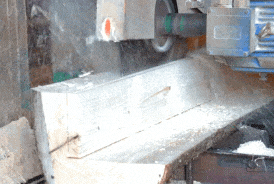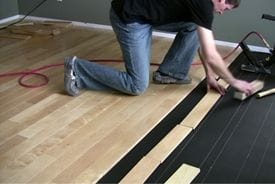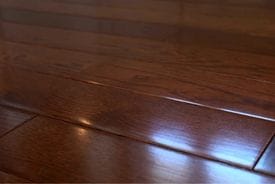What is fabricated wood flooring?
By Dana Krizmanic,
Though not said as much today, a term you might encounter when shopping for flooring is fabricated wood flooring. Fabricated wood flooring is just another name for engineered hardwood.
Real wood
 Engineered hardwood is different from solid hardwood. Solid hardwood is just like it sounds. It is a single piece of real solid wood that they mill into planks for flooring. Engineered hardwood is also real wood. Many people find it surprising, but it’s true.
Engineered hardwood is different from solid hardwood. Solid hardwood is just like it sounds. It is a single piece of real solid wood that they mill into planks for flooring. Engineered hardwood is also real wood. Many people find it surprising, but it’s true.
Layered wood construction
Engineered hardwood is numerous layers of wood that are stacked together. The top layer, which is the part that you see, is as beautiful and natural as a piece of solid wood. They join these layers together in a cross-grain construction. That means each layer of hardwood faces a different direction, and that construction makes the flooring stronger and more dimensionally stable. You might wonder how engineered hardwood could be stronger than a solid piece of wood. In short, all wood products are affected by the relative humidity of the air surrounding them. Wood expands on warmer days when the humidity is higher and contracts on colder days when the humidity is lower. A solid hardwood floor is more susceptible than an engineered floor to the natural expansion and contraction that occurs with wood.
Nail, staple, glue, or floating installation
 Because of the additional strength that comes from the multiple-layer construction, you can install engineered hardwood on any floor of your home, including basements. You can never install solid hardwoods below grade, which means below ground level. The reason is that the moisture levels in basements and other below-grade rooms cause excessive expansion and contraction. You can install engineered hardwood in one of four ways: nail, staple, glue-down, or floating. Floating implies the planks are locked together but not attached to the wall or the floor.
Because of the additional strength that comes from the multiple-layer construction, you can install engineered hardwood on any floor of your home, including basements. You can never install solid hardwoods below grade, which means below ground level. The reason is that the moisture levels in basements and other below-grade rooms cause excessive expansion and contraction. You can install engineered hardwood in one of four ways: nail, staple, glue-down, or floating. Floating implies the planks are locked together but not attached to the wall or the floor.
Wood or concrete subfloor
You can install engineered hardwood over a concrete subfloor. If you install over concrete, you must either use the floating or the glue-down method. You must install solid hardwood using nails or staples. In addition, never install solid hardwood over a concrete subfloor.
Tends to cost less than solid
Solid hardwood is generally three-quarters of an inch thick. Engineered hardwood is thinner than solid, typically ranging from 3/8 to 1/2 of an inch thick. Generally, solid hardwoods tend to be a little more expensive than engineered hardwood.
Beautiful
 Remember, water is the natural enemy of any wood product. Never install solid or engineered hardwood in areas with high moisture levels, which can warp or permanently damage your floor. Finally, both solid and engineered hardwood floors are easy to clean and look like new with sweeping and dry mopping. And both will be beautiful.
Remember, water is the natural enemy of any wood product. Never install solid or engineered hardwood in areas with high moisture levels, which can warp or permanently damage your floor. Finally, both solid and engineered hardwood floors are easy to clean and look like new with sweeping and dry mopping. And both will be beautiful.
Good luck making your final choice. If you have any questions, The expert Flooring Consultants of Creative Carpet & Flooring are always here to help. Fabricated wood flooring, or ANY flooring... we've got you covered!
